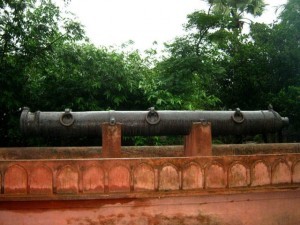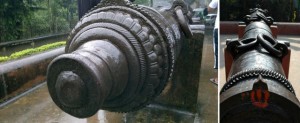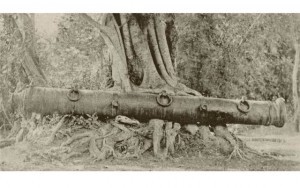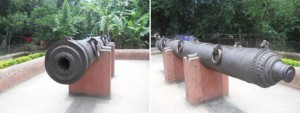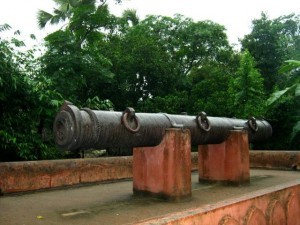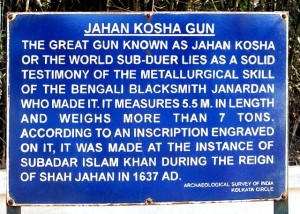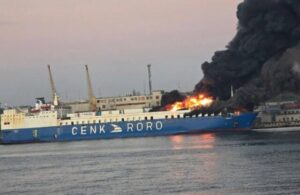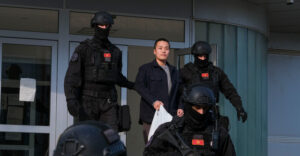The Jahan Kosha Cannon, which literally means “The Destroyer of the World,” was built in 1637 AD by craftsman Janardan Karmakar of Dhaka.
It was commissioned by Daroga Shree Mohammad and constructed under the supervision of Hara Ballav Das.
The Karmakars used to be blacksmiths by profession, but, over time, they have produced a number of engineering masterpieces.
(Jahan Kosha Cannon -the destroyer of the world-)
Made of eight metals (namely gold, silver, lead, copper, zinc, tin, iron, and mercury), this remarkable cannon is more than seven tons in weight, 17 feet, and six inches in length, and three feet in width. It has a girth of five feet at the firing end, and the circumference of its mouth is more than one foot.
The cannon was named in Dacca when Shah Jahan was the Mughal Emperor. At that time, Islam Khan was the Subedar of Bengal. This is confirmed by an inscription engraved on it.
(The cannon measures 17.5 ft in length and weighs 16,880 lb)
Earlier, it rested on a carriage with wheels and was surrounded by the roots of a Peepal tree. Gradually, this cannon had been lifted four feet from the ground. The roots surrounded it so beautifully that it had no possibility of falling down. It used to be astonishing to see the big and heavy cannon hanging four feet in the air.
Later, it was freed from the tree’s roots; the wheels have now disappeared, but the iron-work of the carriage and the trunnions are still visible.
(The muzzle of the cannon is 1 foot and 7 inches)
According to some sources, this cannon was fired only once, at the suggestion Sir Henry Torrens, an agent of the Governor General for the British East India Company at Murshidabad.
(An old photo of the cannon, when it was lifted 4 feet high by the roots of a Peepal tree)
In its wake, the huge sound was unbearable and ear-piercing, and its intensity was felt within a radius of ten miles from the site of the fire.
(17 kilograms of gunpowder are needed for a single shelling)
It is on display in the Topekhana, a quarter of a mile to the southeast of the Katra Mosque, and it still shows no sign of rust despite being exposed to a variety of climatic conditions.
(The cannon is maintained by the Archaeological Survey of India)
It has several other names including “the Great Gun,” “the Conqueror of the Universe,” and “the World Subduer.”
(Information placard about Jahan Kosha Cannon in the campus)
Ask me anything
Explore related questions


